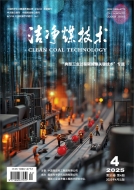Progress and prospects in the chemical looping ammonia synthesis
 2024 No. 05
2024 No. 05
 1320
1320 409
409

Citation format:

Authors:
- WANG Runze
- FENG Sheng
- WANG Yawei
- GAO Wenbo
- GUO Jianping
- CHEN Ping

Unit:
- Dalian Institute of Chemical Physics,Chinese Academy of Sciences
- Center of Materials Scienceand Optoelectronics Engineering,University of Chinese Academy of Sciences

Abstract:
Ammonia is mainly used as a raw material for the production of nitrogen fertilizers. In recent years, it also has been seen as apromising energy carrier. Industrial ammonia synthesis is mainly based on the Haber-Bosch (H-B) process requiring a significant energyinput, so it relies severely on fossil energy and leads high CO2 emissions. Therefore, there is an urgent need to develop " Green ammoniasynthesis" process driven by renewable energy operating under mild conditions. Chemical looping ammonia synthesis (CLAS) is a processthat decouples the ammonia synthesis reaction into multiple sub-reactions mediated by an intermediate N carrier material. It has the advantages of circumventing the ubiquity scaling relationships, avoiding the competitive adsorption between N2 and H2(or H2O), and beingable to operate at atmospheric pressure. In addition, this process is suitable to distributed and small-scale ammonia synthesis and is easyto couple with the utilize of renewable energy. Therefore, CLAS has received widely attention in recent years. This review was initiated bybriefly defining chemical looping processes and summarizing the research of chemical looping in the area of fossil fuel conversion. The history of CLAS, the development of nitrogen carrier materials, and some recent progresses were then reviewed. The discussion was concludedwith future perspectives on the design of nitrogen carrier materials and the prospective advancements in CLAS. The binary metalnitrides, multi-metallic nitrides, metal imides, and metal nitrides, which were used as nitrogen carrier materials in N2-H2 and/ or N2-H2OCLAS, were presented. Additionally, the CLAS process assisted by external energy such as electricity, light, plasma, and microwaves wasdiscussed. Strategies to enhance the thermodynamic and kinetic performance of nitrogen carrier materials were also detailed. Finally, thereview addressed current challenges and emerging research directions in chemical looping ammonia synthesis.

Keywords:
- chemical looping
- ammonia synthesis
- nitrogen carriers
- metal imides
- metal nitrides

Citation format:

Chart:

Articles:

-
Executive director
China Coal Science and Industry Group Co., Ltd
-
Sponsored by
Coal Science Research Institute Co., Ltd
Coal Industry Clean Coal Engineering
Technology Research Center -
Editor in Chief
XIE Qiang
-
Vice Editor-in-Chief
YU Chang
SHI Yixiang
ZHAO Yongchun
DUAN Linbo
CAO Jingpei
ZENG Jie -
Publication Frequencies
Monthly
-
ISSN
1006-6772
-
CN
11-3676/TD
Covered by
- CSTPCD
- RCCSE(A+)
- AJ
- EBSCO host
- Ulrichsweb
- JST
- Scopus
Contact us
New Media
-
 Meichuanmei
Meichuanmei -
 Clean Coal Technology
Clean Coal Technology -
 Online Journals
Online Journals












 Submission system
Submission system Copyright agreement
Copyright agreement Instructions for authors
Instructions for authors